21 Popular Flowers in Japan (and How to See Them!)
“Flower” in Japanese is 花 (hana), and boy, does Japan have a lot of culturally significant flowers! You can see this in especially 生け花 (ikebana), or the Japanese art of flower arranging.
In this article, I’ll introduce you to some interesting linguistic and cultural aspects of flowers in Japan and where to see them.
I lived in Japan for several years, including in Tochigi Prefecture, home to the famous Ashikaga Flower Park (more on that below!).
Here’s me participating in hanami – I’ll explain what this is soon!
So whether you’re a language enthusiast, a gardening aficionado, or simply a fan of Japanese culture, this guide will offer you insights and tips all about flowers in Japanese!
Table of contents
- Writing Flower in Japanese
- 21 Common Flowers in Japan and Their Meanings
- 1. 桜 ( Sakura ) — Cherry Blossom
- 2. 梅 ( Ume ) — Plum Blossom
- 3. 桃 ( Momo ) — Peach Blossom
- 4. 菊 ( Kiku ) — Chrysanthemum
- 5. 向日葵 ( Himawari ) — Sunflower
- 6. 藤 ( Fuji ) — Wisteria
- 7. 椿 ( Tsubaki ) — Camellia
- 8. 朝顔 ( Asagao ) — Morning Glory
- 9. カーネーション ( Kaaneeshon ) — Carnation
- 10. 紫陽花 ( Ajisai ) — Hydrangea
- 11. 金木犀 ( Kinmokusei ) — Orange Osmanthus
- 12. 薔薇 ( Bara ) — Rose
- 13. 桜草 ( Sakurasou ) — Japanese Primrose
- 14. チューリップ ( Chuurippu ) — Tulip
- 15. 菫 ( Sumire ) — Violet
- 16. ラベンダー ( Rabendaa ) — Lavender
- 17. 菖蒲 ( Ayame ) — Iris
- 18. 彼岸花 ( Higanbana ) — Red Spider Lily
- 19. 百合 ( Yuri ) — Lily
- 20. 枇杷 ( Biwa ) — Loquat
- 21. 芝桜 ( Shibazakura ) — Pink Moss)
- Flower Power for Language
Writing Flower in Japanese
Okay, so I sort of already answered this one: the basic word for “flower” in Japanese is indeed 花 (hana), but that’s not all you need to know!
Occasionally, you might also come across 華 (hana), which is pronounced the same way but has a more poetic nuance.
There’s also a lot more to writing flowers in Japanese than you might think. I’ll introduce you to some common flowers in Japan and in Japanese in the next section, but first, a few bits of kanji information:
Some flower names in Japanese use ateji (当て字), which is the practice of using kanji characters for their phonetic value rather than their semantic meaning to represent words in Japanese, particularly for foreign or borrowed terms. I’ll point out how this is used with the word for “sunflower” below!
Also, while many Japanese flowers have their own kanji, you might also commonly see them written in katakana instead. Flower names (like the one I’ll show you for “rose”) often have complex kanji that can be difficult to read and write.
Using katakana, a script typically reserved for foreign words and onomatopoeia simplifies these terms visually and phonetically. Katakana provides a straightforward phonetic representation, making it easier to pronounce and remember the names of flowers.
21 Common Flowers in Japan and Their Meanings
Here, I’ll introduce you to 21 of the most common flowers in Japanese. Please note that the blooming time is an approximation (especially in an era of fast-paced climate change).
For example, cherry blossoms tend to bloom around March to early April. But this will be different year by year, and also where in Japan you are will make a big difference.
Along with the flower information, I’ll teach you what they often symbolize. But wait, there’s more! I’ll also introduce you to the flowers’ 花言葉 (hanakotoba – literally, “flower language”). This is what each flower means based on appearance, history, and other cultural factors!
First off, here are all the flowers I’m going to introduce to you in this article:
| Japanese | Romaji | English | Audio |
|---|---|---|---|
| 花 | Hana | Flower | |
| 桜 | Sakura | Cherry blossom | |
| 梅 | Ume | Plum blossom | |
| 桃 | Momo | Peach blossom | |
| 菊 | Kiku | Chrysanthemum | |
| 向日葵 | Himawari | Sunflower | |
| 藤 | Fuji | Wisteria | |
| 椿 | Tsubaki | Cermellia | |
| 朝顔 | Asagao | Morning Glory | |
| カーネーション | Kaaneeshon | Carnation | |
| 紫陽花 | Ajisai | Hydrangea | |
| 金木犀 | Kinmokusei | Orange Osmanthus | |
| 薔薇 | Bara | Rose | |
| 桜草 | Sakurasou | Japanese Primrose | |
| チューリップ | Chuurippu | Tulip | |
| 菫 | Sumire | Violet | |
| ラベンダー | Rabendaa | Lavender | |
| 菖蒲 | Ayame | Iris | |
| 彼岸花 | Higanbara | Red Spider Lily | |
| 百合 | Yuri | Lily | |
| 枇杷 | Biwa | Loquat |
1. 桜 (Sakura) — Cherry Blossom
When They Bloom: Late March to early April
Hanakotoba: “A beautiful soul”
Symbolizes: Transience, beauty, and impermanence
Sakura is the quintessential (and national) symbol of Japan. These beautiful pink blossoms signify the arrival of spring and are celebrated with 花見 (hanami, “flower viewing”) parties, where you picnic (and often drink) beneath cherry blossom trees. It’s a major social event!
(You’ll notice the blue tarps in my photo at the beginning of this article – they’re ubiquitous during cherry blossom season!)
Cherry blossoms look a lot like peach and plum blossoms, but here’s a tip to distinguish them: cherry blossoms have a notch at the tip of their petals!
Now, cherry blossoms represent transience for a reason: they only bloom for a couple of weeks (or less, depending on the weather). They tend to bloom earlier in the south (where it’s warmer) than the north.
Actually, every year, websites like Japan Travel publish forecasts for cherry blossoms, much like weather forecasts.
So honestly, it will be fairly unpredictable whether you can see them on a trip to Japan if you’re only going for a short while, unless you’re willing to book your trip on very short notice!
2. 梅 (Ume) — Plum Blossom
When They Bloom: Late January to early February
Hanakotoba: “Elegance”
Symbolizes: Perseverance, renewal, and good fortune
Ume blossoms are among the first signs that winter is ending. They’re often more fragrant than sakura and often featured in Japanese art and poetry. These are another popular flower to do hanami with.
3. 桃 (Momo) — Peach Blossom
When They Bloom: Early March
Hanakotoba: “A fascinating personality”
Peach blossoms have a strong association with 雛祭り (Hinamatsuri, Girls’ Day on March 3rd). These blossoms bring a soft, delicate beauty to spring.
4. 菊 (Kiku) — Chrysanthemum
When They Bloom: September to November
Hanakotoba: “Noble”
Symbolizes: Longevity and rejuvenation
Chrysanthemums are a symbol of the Japanese Imperial Family and embody longevity and rejuvenation. They’re also a key feature in Kyoto’s annual Chrysanthemum Festival, or 重陽の節句 (Chouyou no Sekku), held on September 9th.
5. 向日葵 (Himawari) — Sunflower
When They Bloom: July to August
Hanakotoba: “Radiate”
Symbolizes: Adoration, vitality, and longevity.
Sunflowers are bright, cheerful, and a reminder of the summer sun. They also symbolize loyalty and adoration.
Fun fact: The kanji for himawari is an ateji, which means it’s chosen for meaning rather than phonetic purposes. It literally means “rotating around the sun,” which is what sunflowers do!
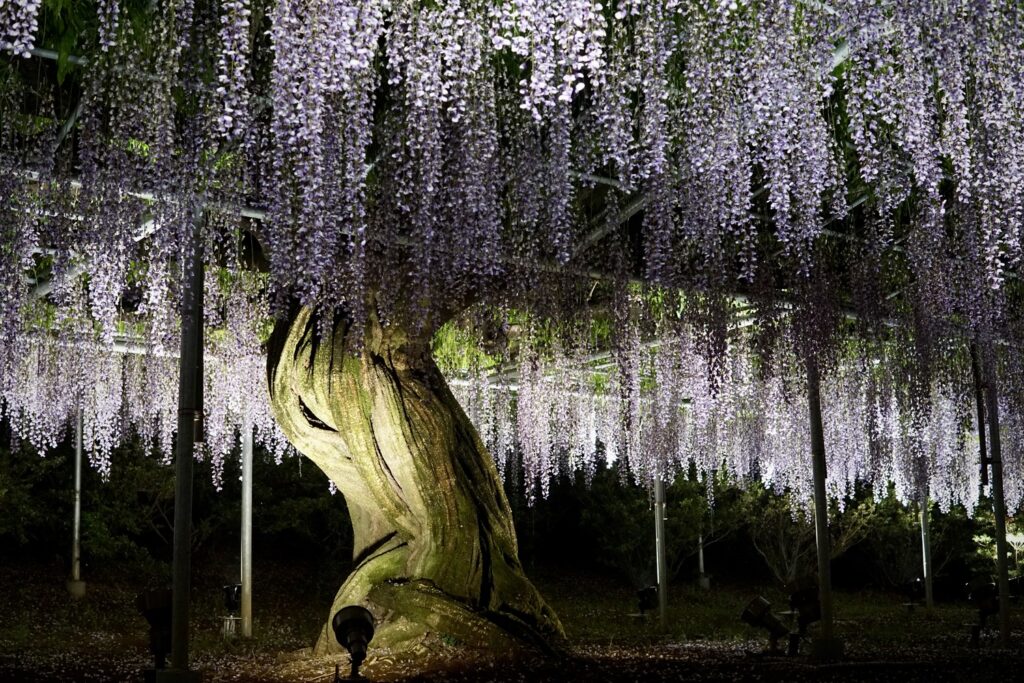
Here’s a photo I took of the wisteria at the famous Ashikaga Flower Park!
6. 藤 (Fuji) — Wisteria
When They Bloom: Late April to early May
Hanakotoba: “Welcome”
Symbolizes: Elegance, tenderness, and nostalgia
Wisteria flowers cascade like purple waterfalls, but they can also be in other colors, such as pink, white, and yellow. They’re often found wrapping around arches and trellises in Japanese gardens. The Ashikaga Flower Park is famous for its stunning wisteria displays. (I’ve been to this one, and it’s really worth it in the springtime!)
The kanji for wisteria 藤 (read either as fuji or tou/dou) is a common part of Japanese surnames, including the historic Fujiwara (藤原) clan or the ever-common surname Sato (佐藤). But don’t get it mixed up with Mt. Fuji (富士山) – that’s a totally unrelated kanji!
7. 椿 (Tsubaki) — Camellia
When They Bloom: January to March
Hanakotoba: “Modesty”
Symbolizes: Elegance, tenderness, and nostalgia
Camellia flowers are beautiful in their simplicity and are often used in tea ceremonies. They’re a favorite in both gardens and art. They are also associated with the samurai code of honor, 武士道 (bushidou).
8. 朝顔 (Asagao) — Morning Glory
When They Bloom: July to October
Hanakotoba: “Love in vain”
Symbolizes: Brief love and bond of love
Morning Glories open with the sunrise and close by afternoon. They symbolize fleeting love and the transient nature of life. Their name literally means “morning face.”
9. カーネーション (Kaaneeshon) — Carnation
When They Bloom: Late Spring to Midsummer
Hanakotoba: “Love and fascination”
Symbolizes: Love
Carnations are commonly used in bouquets and arrangements, especially on Mother’s Day. Each color of carnation has a different meaning, with pink being the most popular.
10. 紫陽花 (Ajisai) — Hydrangea
When They Bloom: June to July
Hanakotoba: “Heartfelt emotion”
Symbolizes: Transformation and apology
Hydrangeas bloom from spring to early autumn, typically during the rainy season, and their color can change with the soil’s pH.
11. 金木犀 (Kinmokusei) — Orange Osmanthus
When They Bloom: October
Hanakotoba: “True love”
Symbolizes: Truth and a noble person.
These flowers were brought to Japan via China during the Edo Period (1603-1868). The tiny orange blossoms of the Osmanthus give off a powerful, sweet fragrance. They’re often used in perfumes and for seasonal flower arrangements.
12. 薔薇 (Bara) — Rose
When They Bloom: Spring through Autumn
Hanakotoba: “Love”
Symbolizes: Romance
Roses are as cherished in Japan as they are in the West. Red roses especially symbolize romantic love.
Note that although this flower has kanji, it’s most commonly written in katakana (バラ) because the kanji are so complex.
13. 桜草 (Sakurasou) — Japanese Primrose
When They Bloom: April to May
Hanakotoba: “Desperate”
Symbolizes: Desire and long-lasting love
Formally known as “Primula Sieboldii,” these small, delightful flowers are considered a symbol of unrequited love. They often grow in clusters and add a beautiful touch to spring gardens. It resembles the cherry blossom flower.
14. チューリップ (Chuurippu) — Tulip
When They Bloom: April to May
Hanakotoba: “Charity”
Symbolizes: Fame and eternal love
Tulips come in many vibrant colors. They are popular in both Western and Japanese gardens. They symbolize elegance and grace. They’re staples of Gunma Flower Park as well as Huis Ten Bosch, a Dutch-themed park in Nagasaki.
15. 菫 (Sumire) — Violet
When They Bloom: March to May
Hanakotoba: “Small love”
Symbolizes: Sincerity and bliss
These tiny purple flowers are humble but pretty. They’re often found in the wild as well as sprucing up gardens with bright violet petals and long ivory stems.
16. ラベンダー (Rabendaa) — Lavender
When They Bloom: June to July
Hanakotoba: “Silence”
Symbolizes: Faithfulness
Lavender fields are not just beautiful but also incredibly soothing. They’re often used in aromatherapy for their calming effects. They’re a staple in the Furano Flower Fields in Hokkaido.
17. 菖蒲 (Ayame) — Iris
When They Bloom: May to June
Hanakotoba: “Good news” and “Heroism”
Symbolizes: Courage and strength
The iris is a popular feature of the May 5th Boy’s Festival. They are used in traditional Japanese medicine and symbolize lasting bonds. Historically, the iris motif adorned samurai armor, representing valor and nobility.
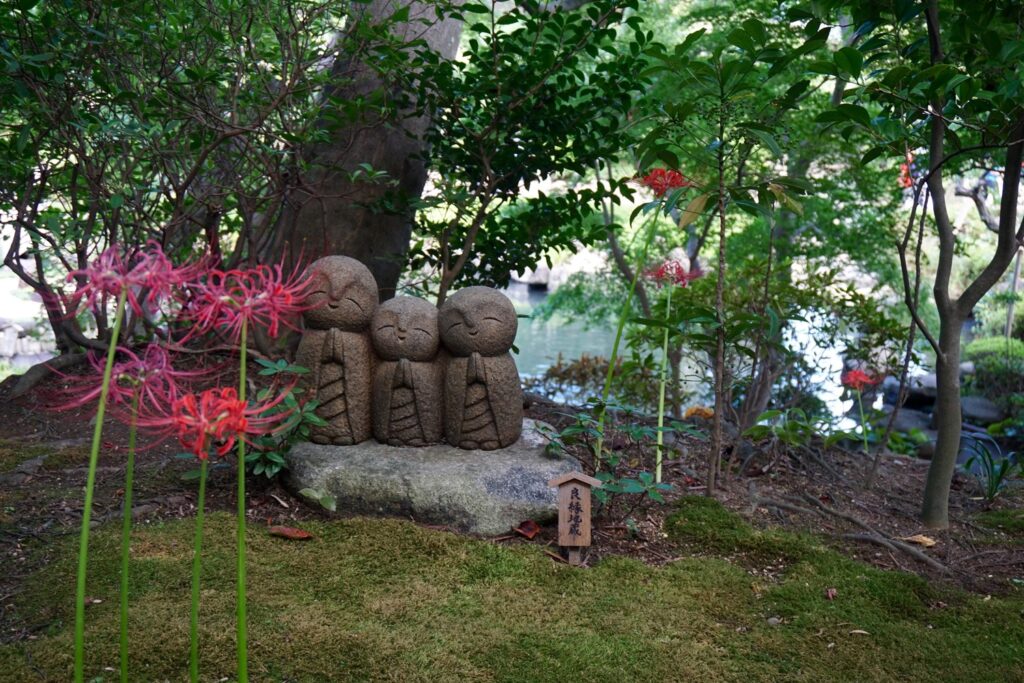
Here are red spider lilies on the grounds of a Buddhist temple. Buddhism is associated with cemeteries in Japanese culture.
18. 彼岸花 (Higanbana) — Red Spider Lily
When They Bloom: Late September
Hanakotoba: “Never to meet again”
Symbolizes: Death, reincarnation, and the cycle of life
Higanbana are associated with death and the afterlife. These striking red flowers are often planted in graveyards and seen in Japanese media, symbolizing the cycle of life and death.
19. 百合 (Yuri) — Lily
When They Bloom: June to August
Hanakotoba: “Pure and refined”
Symbolizes: Purity, innocence, and renewal
Lilies come in many varieties and are particularly loved for their strong fragrance and striking beauty. They are often worn during weddings.
20. 枇杷 (Biwa) — Loquat
When They Bloom: Autumn to Early Winter
Hanakotoba: “Patience and steadfastness”
Symbolizes: Longevity and protection.
Blooming in late winter, loquat flowers transform into sweet fruits by early summer. Their unobtrusive yet fragrant flowers are signs that winter is here! They also have been used in traditional medicine.
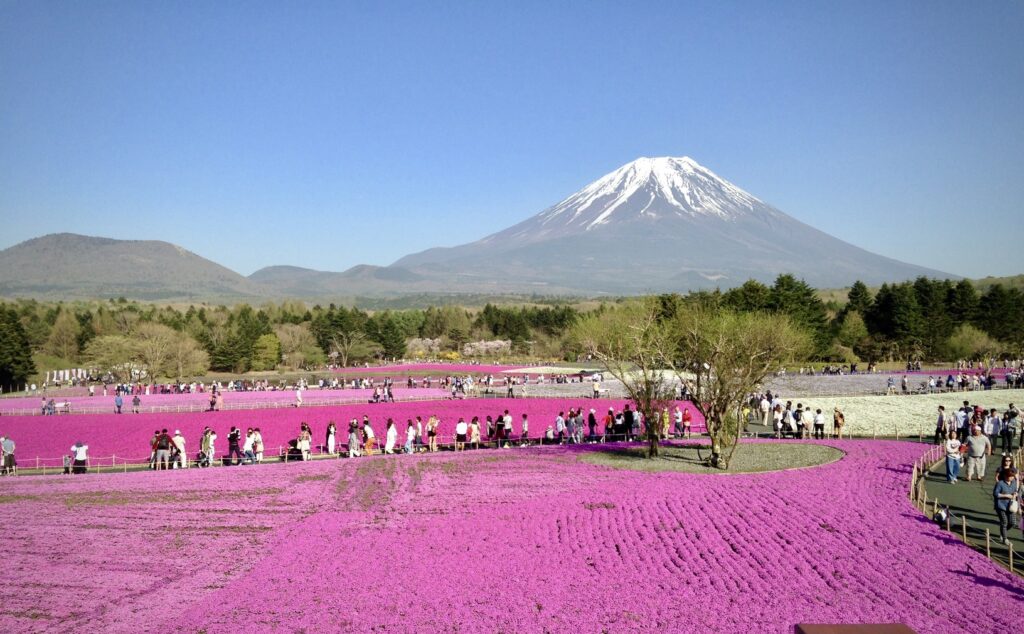
Here’s an iconic image of Mt. Fuji with the pink moss in full bloom!
21. 芝桜 (Shibazakura) — Pink Moss)
When They Bloom: April to May
Hanakotoba: “Harmony”
Also known as “phlox moss,” these low-growing flowers blanket hills and gardens with vibrant pink, white, and purple hues. So they create a stunning, almost carpet-like effect! They’re especially iconic in places like the Fuji Shibazakura Festival (富士芝桜まつり, Fuji Shibazakura Matsuri).
Flower Power for Language
This was just a taster of the types of flowers you’ll find in Japan. Which ones are your favorites, and are there any I missed? Hopefully your language skills will “blossom” even more with the knowledge you’ve gained here!

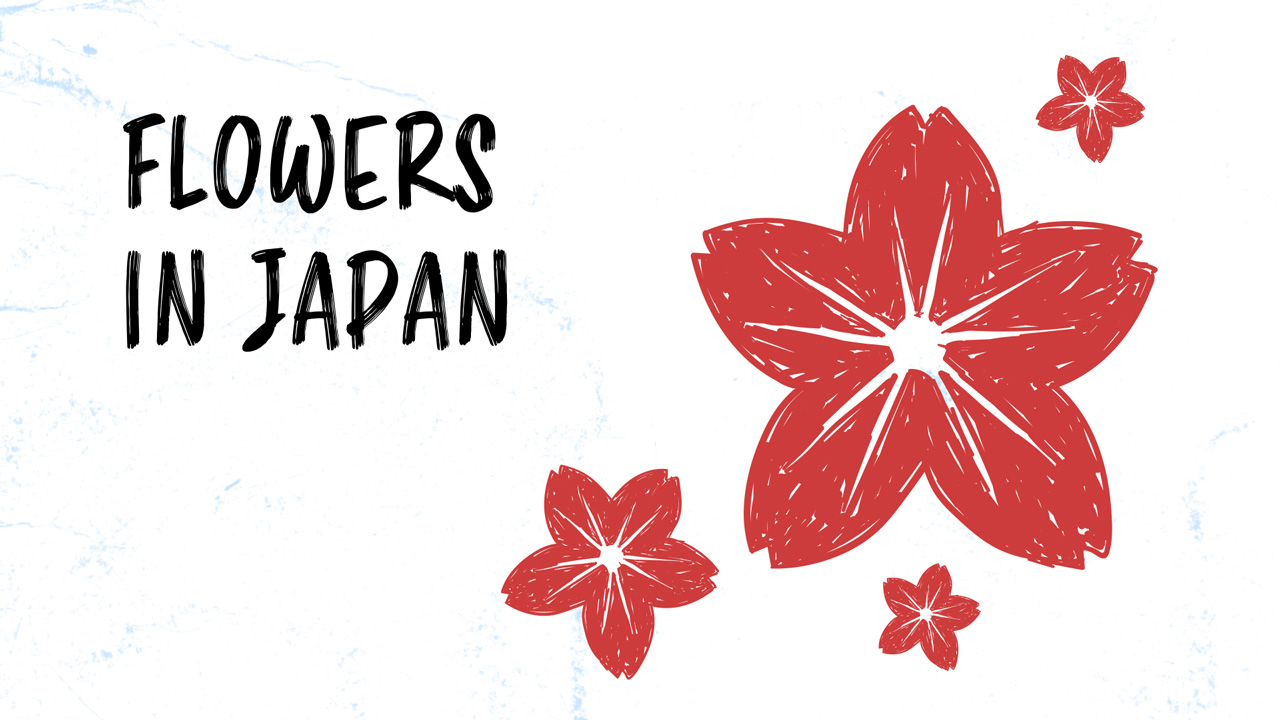
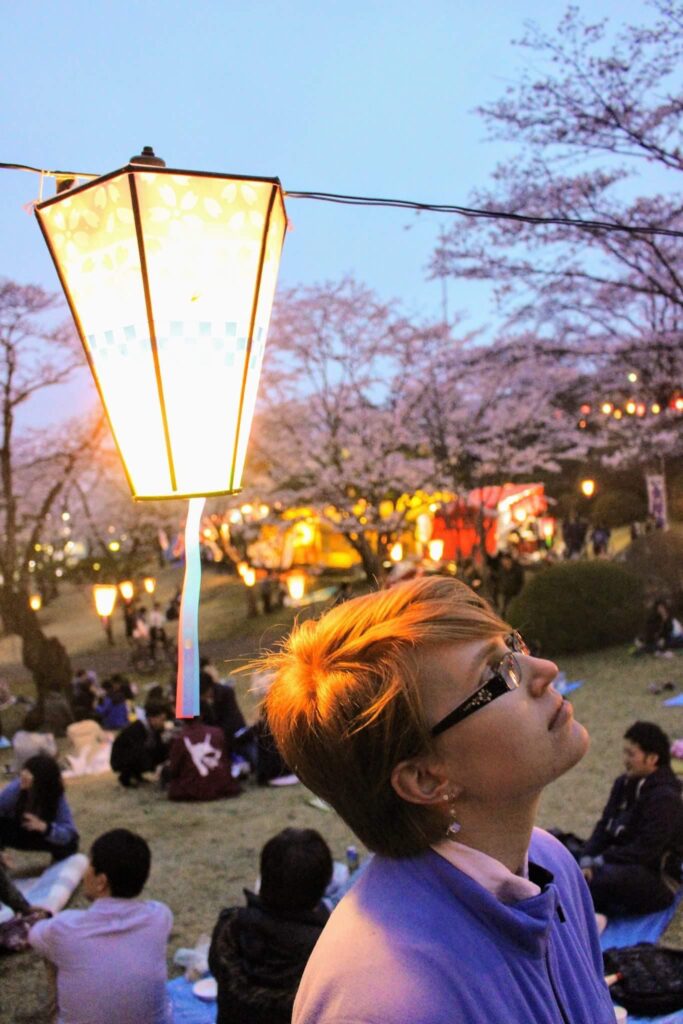

Social